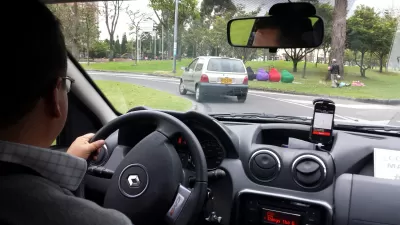The track record of the public sector keeping up with mobility innovations varies by geography and level of governance. According to this article, it's imperative that the public sector keeps up with the pace of private sector innovation.

Ratna Amin begins a recent opinion piece for SPU with a question: "When you hop between bus, bike sharing, taxi and train, whose app are you going to use? Who is going to manage that experience?"
The question is probably easy for most people to answer—there are apps for directions while driving, apps for letting someone else do the driving, apps for renting bikes and scooters, apps for public transit, and even apps for choosing the prettiest route to walk—there are even apps that combine most or all of these modes.
As the mobility-as-a-service (MaaS) market has evolved, companies like Uber have gone multi-modal, and Ratma expresses concern about the consequences of allowing the private sector to dominate the mobility app market. In fact, Ratma details six potential consequences of private sector dominance of MaaS:
- A restricted marketplace limits options
- Public transportation loses relevance
- Private management reduces access and equity
- People have less incentive to make sustainable choices
- Restricted data limits our ability to manage our transportation systems
- Transportation services diverge further
Ratma also describes the many forms public sector stewardship of the mobility experience could take. A first step toward an a more influential role for the public sector is choosing the agency or agencies "responsible for creating and implementing the region’s MaaS vision."
FULL STORY: Why We Can’t Leave Transportation Apps to the Private Sector

Alabama: Trump Terminates Settlements for Black Communities Harmed By Raw Sewage
Trump deemed the landmark civil rights agreement “illegal DEI and environmental justice policy.”

Planetizen Federal Action Tracker
A weekly monitor of how Trump’s orders and actions are impacting planners and planning in America.

The 120 Year Old Tiny Home Villages That Sheltered San Francisco’s Earthquake Refugees
More than a century ago, San Francisco mobilized to house thousands of residents displaced by the 1906 earthquake. Could their strategy offer a model for the present?

Opinion: California’s SB 79 Would Improve Housing Affordability and Transit Access
A proposed bill would legalize transit-oriented development statewide.

Record Temperatures Prompt Push for Environmental Justice Bills
Nevada legislators are proposing laws that would mandate heat mitigation measures to protect residents from the impacts of extreme heat.

Downtown Pittsburgh Set to Gain 1,300 New Housing Units
Pittsburgh’s office buildings, many of which date back to the early 20th century, are prime candidates for conversion to housing.
Urban Design for Planners 1: Software Tools
This six-course series explores essential urban design concepts using open source software and equips planners with the tools they need to participate fully in the urban design process.
Planning for Universal Design
Learn the tools for implementing Universal Design in planning regulations.
Clanton & Associates, Inc.
Jessamine County Fiscal Court
Institute for Housing and Urban Development Studies (IHS)
City of Grandview
Harvard GSD Executive Education
Toledo-Lucas County Plan Commissions
Salt Lake City
NYU Wagner Graduate School of Public Service





























